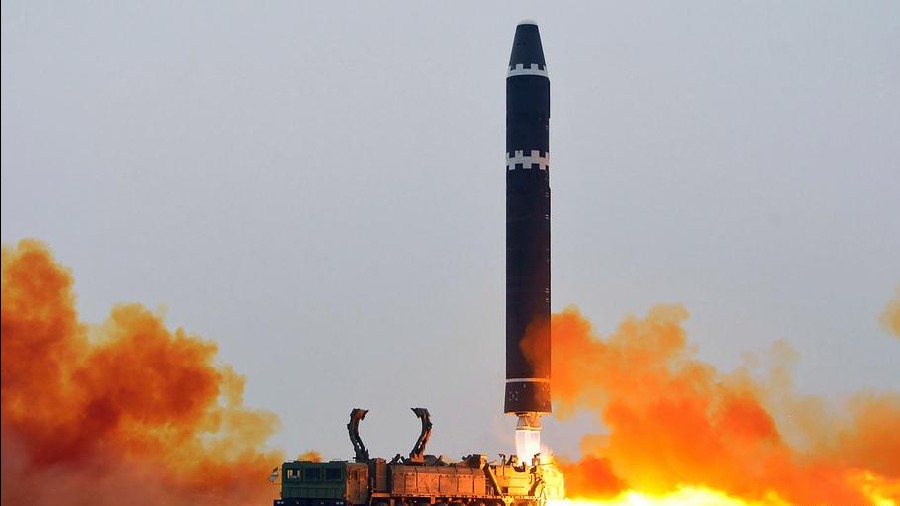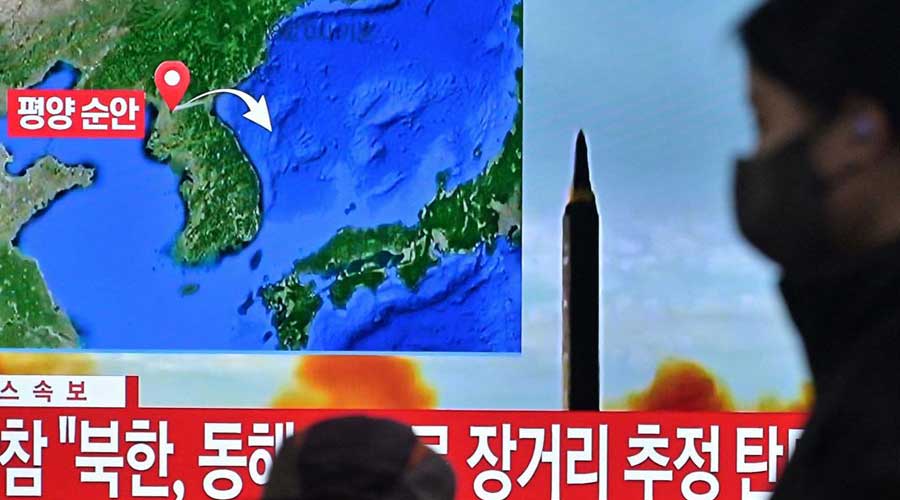North Korea said on Sunday that it had test-fired an intercontinental ballistic missile as a warning to South Korea and the United States.
It said that the "surprise" drill showed "actual proof" of North Korea's "capacity of fatal nuclear counterattack," North Korea's official KCNA news agency reported.
KCNA reported North Korea's leadership as saying the test showed "the actual war capacity of the ICBM units which are ready for mobile and mighty counterattack." It said that the Hwasong-15 missile provided a "powerful physical nuclear deterrent."
The launch was designed to verify the weapon's reliability and combat readiness of North Korea's nuclear force, KCNA said.
The agency said that the missile reached a maximum altitude of about 5,770 kilometers (3,585 miles) and flew a distance of about 990 kilometers (615 miles).
What was the missile test?
North Korean leader Kim Jong Un ordered the drill at 8 a.m. local time on Saturday (2300 GMT). A Hwasong-15 missile was fired from Pyongyang airport in the afternoon.
Japan said the ICBM flew for 66 minutes before landing in its Exclusive Economic Zone. Tokyo's analysis indicated the missile was capable of hitting the mainland US.
Pyongyang's launch of the missile comes just days before Seoul and Washington are due to start exercises aimed at improving their response in the event of a North Korean nuclear attack. Last week, Pyongyang said it would show an "unprecedently" strong response to the drills.
Saturday's launch was North Korea's first missile test since January 1.
It is unclear whether North Korea has a functioning nuclear-tipped ICBM.











